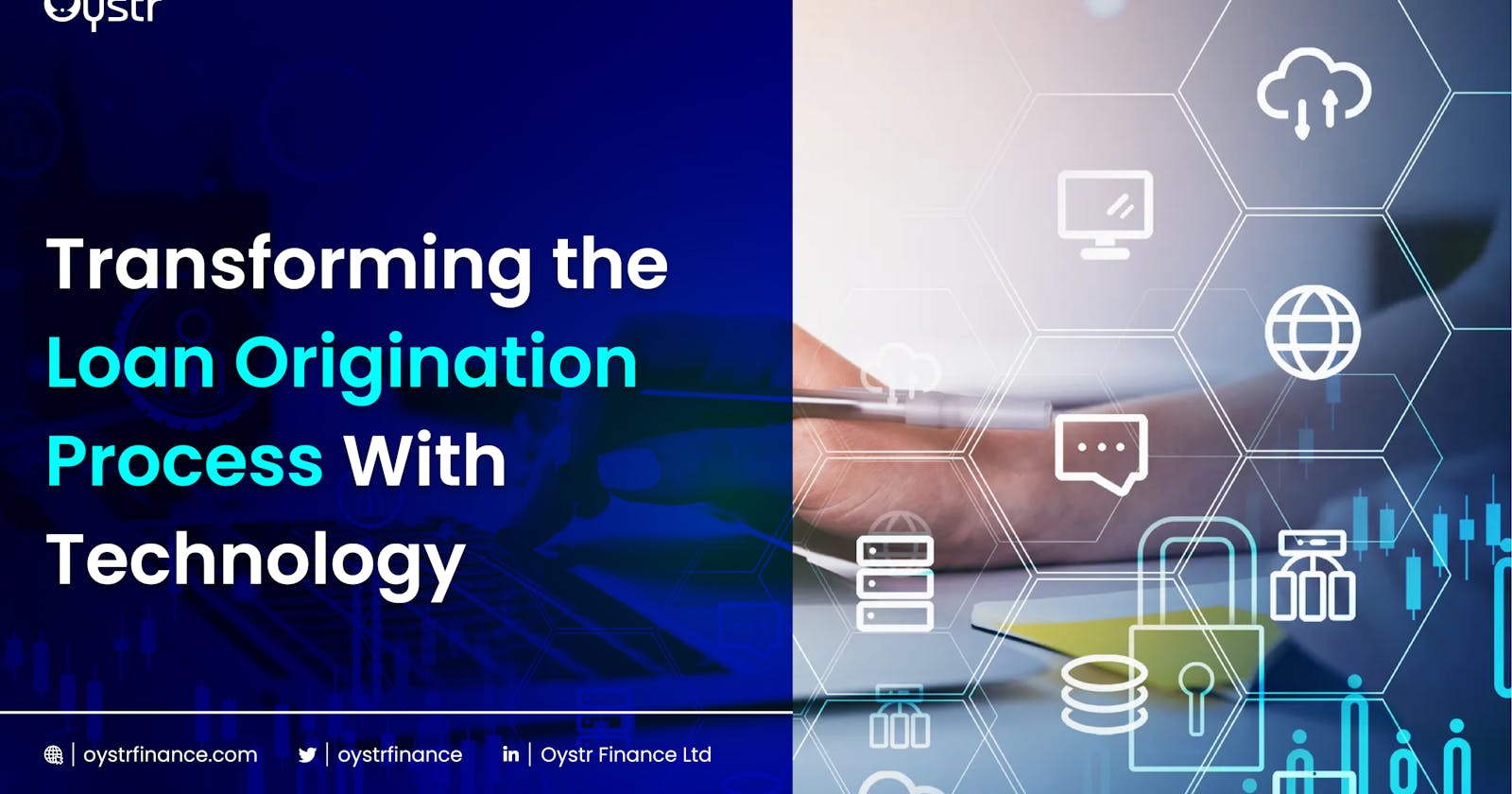Borrowers can be impatient when initiating and waiting on loan applications. While loan applications may seem simple to originate, many times, the FIs require borrowers to wait weeks or months before they receive their loan application approval. In lending, efficiency and usability are essential. Unfortunately, the financial industry has been reluctant to digitize essential banking services such as lending, falling behind fintech startups.
Financial institutions (FIs) now have access to various technological solutions as they race to catch up in the consumer and commercial lending markets. As a result, financial institutions (FIs) can improve their lending operations and clients' experiences by employing more digital tactics; loan origination software is a vital enabler of this improvement.
Let's examine the loan origination process and how technology can impact the lending process in speed and accuracy.
What is Loan Origination?
Everything a lending company does before loan disbursement is referred to as "loan origination." This is when a great deal of time and care must be devoted. Due to today's technologically savvy yet socially isolating society, businesses cannot succeed without intelligent and user-friendly digital origination.
In the world of lending, good digital origination plays an important role. It's crucial to have a well-developed and automated process for borrowers. In addition, there's a need to take care of clients and ensure everything is structured in such a way that helps them get the best loan terms.
The loan origination cycle lenders choose determines the borrowers accepted, the criteria you use to analyze them, the filters applied to their applications, the terms, and overall business success.
A lack of a proper loan origination process can quickly become a stumbling block for business. And lenders will have to deal with bad debt and unreliable clients while trying to do so. Automation ensures an effortless experience for borrowers and expands their options.

What is a Loan Automation System?
A loan automation system digitally and automatically simplifies the entirety of the credit application procedure by leveraging the internet and cloud computing. It can considerably assist the lending sector by maximizing analytics' potential. With the use of analytics, you can monitor your progress and gain insights that will allow you to enhance the efficiency of your processes over time. Continuous process improvement is vital in today's highly competitive lending industry to maintain profitability.
Automating the loan application procedure enhances access to capital. Consider investing in a loan automation system if your business relies heavily on client borrowing to move inventory. Automating the loan process increases efficiency, duplication, and closing times.
The automated method is more efficient and less time-consuming than the conventional approach because it does not involve manual labor or in-person meetings.
By prioritizing applications that match lending standards, the system saves time during the screening and funding phases and guarantees that borrowers receive superior service.
Benefits of Digitization in Loan Processes
In today's technologically advanced society, where consumers want practically everything to be instantly accessible and automated, a lending company's web presence is a need.
For these services to be supplied more efficiently and effectively, lenders must replace manual, paper-based processes with automated, digital ones. Even if this change requires a substantial investment of time and money, it may be worthwhile in the long run.
1. Making Smarter Decisions
Automation can help lenders make more informed decisions regarding loan applications. It eliminates repetitive, time-consuming processes that can be handled digitally, allowing people to concentrate their expertise where they will have the most significant impact.
Lenders can automate the analysis of applicant information by integrating credit data sources and services. For example, standardized review criteria swiftly approve qualified borrowers while rejecting those with inadequate or nonexistent credit histories. Now that the underwriter has quick and secure access to digital images of paper documents, application data may be analyzed rapidly.
Human decision-making is plagued by unpredictability and inconsistency, which are eliminated through decision criteria. The ability to readily modify decision criteria enables the automation of everyday evaluation chores while leaving difficult choices to underwriters with specialized training.
By employing decision criteria and integrating with credit data sources and services, lenders can automatically determine optimal loan structures and terms for borrowers.

2. CRM Capabilities
Utilizing customer relationship management (CRM), financial firms can more easily access vital client data. They can save their paperwork, documents, and loan data in one location. The customer relationship management (CRM) system monitors data as loans are processed via the loan automation system, thereby decreasing the administrative burden and maximizing efficiency.
3. Multiple Digital Message Transmission Methods
Using an automated loan system, lenders can generate several notification templates that can be customized with applicant and loan information before being sent to clients.
They can then utilize multichannel communication to disseminate alerts over multiple channels, including the Internet, traditional mail, and SMS. Using these choices instead of conventional printing and mailing techniques can result in significant cost savings.
A further advantage of utilizing several communication channels is digitally and securely storing notifications. This strategy helps lenders demonstrate regulatory compliance via adverse action letters, saves money, and eliminates the hazards associated with paper records.
4 Data Transfer Application Programming Interface
By utilizing APIs, lenders and servicers can get significant benefits (application programming interfaces). They increase productivity, data quality, and customer happiness. In addition, using an API facilitates the utilization of third-party services.
Its ultimate purpose is to ease other applications' control of local and corporate workflows.
5. Cloud-based Delivery
Multiple sites can be set up with a cloud-hosted automated lending system in a short amount of time. As a result, it is more practical, ever-evolving, and dependable. In addition, by granting authorized users encrypted access to the system, administrators limit the likelihood of sensitive data being saved to unprotected local storage devices.
6. Analytical Instruments for Continuous Process Improvement
Banks and lenders can analyze and assess their lending practices due to automation.
Inevitably, there will be an abundance of the applicant, underwriting, and prospective funding source data generated.
Using modern analytic tools, the lender can segment this information to identify potential trouble locations. The outcomes reveal the lender's policies, processes' strengths, and development opportunities.
These analytics can result in other tangible benefits:
- Determining the inefficient manual loan origination processes that can be automated using decision rules.
- Discovering the best loan opportunities and how to reproduce them in other settings.
- Determining which borrower characteristics positively impact loan performance and then prioritizing applications from individuals who possess those characteristics.
- Deciding which loan arrangements and terms lower the probability of default.

What Loan Origination Process Can be Automated?
Here are some processes that can be automated:
Pre-Qualification
Typically, the consumer is required to submit multiple pieces of paperwork during the pre-qualification process. The documentation may include bank and previous loan statements but is not limited to these.
Before a prospective borrower can continue forward, certain documents are required.
However, with modern technology, lenders may obtain all the necessary information within minutes. How? We only require the borrower's phone number, linked to their banking and employment activity, to retrieve the pertinent information.
Managing Applications
After providing the essential details, borrowers can apply for loans fast. Creditors could spend less time manually reviewing these applications if an accurate AI generated the majority of data. In addition, machine language and AI tools help detect problems and ensure that all necessary procedures have been completed.
Evaluation of Creditworthiness and Provision of Loan Offers
The underwriting process begins with the submission of an application. Lenders will now analyze applications based on factors such as credit history and risk, with many employing a scoring algorithm tailored to their industry. This approach can now be entirely automated by utilizing a rule engine and API links to credit-scoring providers.
Lenders can promptly determine the creditworthiness of applicants with alternative data and loan origination system (LOS). They can get an overview of lenders likely to default on loans.
Additionally, borrowers will be informed of the maximum loan amount based on their credit score. This allows quick and straightforward decision-making.
Oystr Finance enables you to check borrower information, access consumer credit history, issue loans to borrower wallets across Africa, and collect loan repayment from borrower wallets across Africa with the touch of a button. Visit our website for more information.

